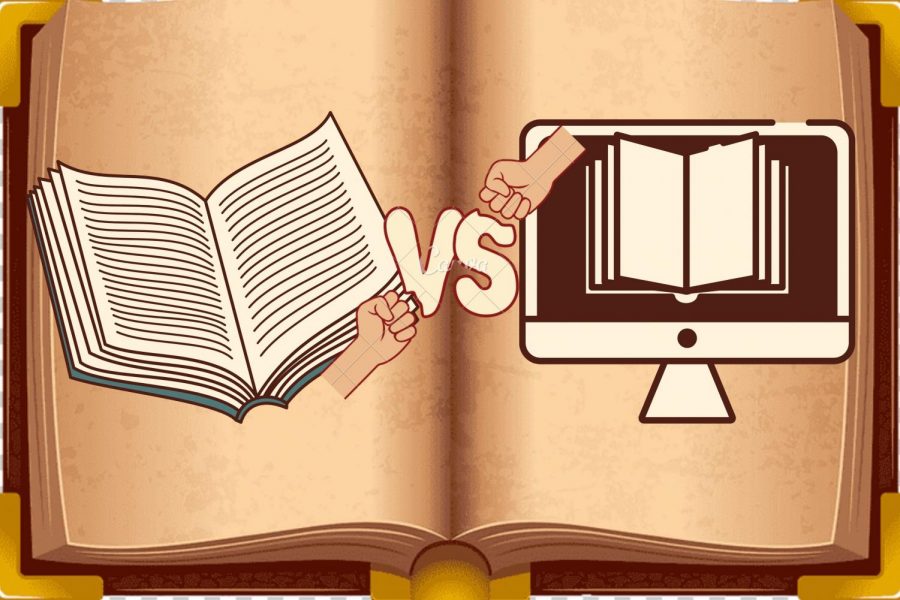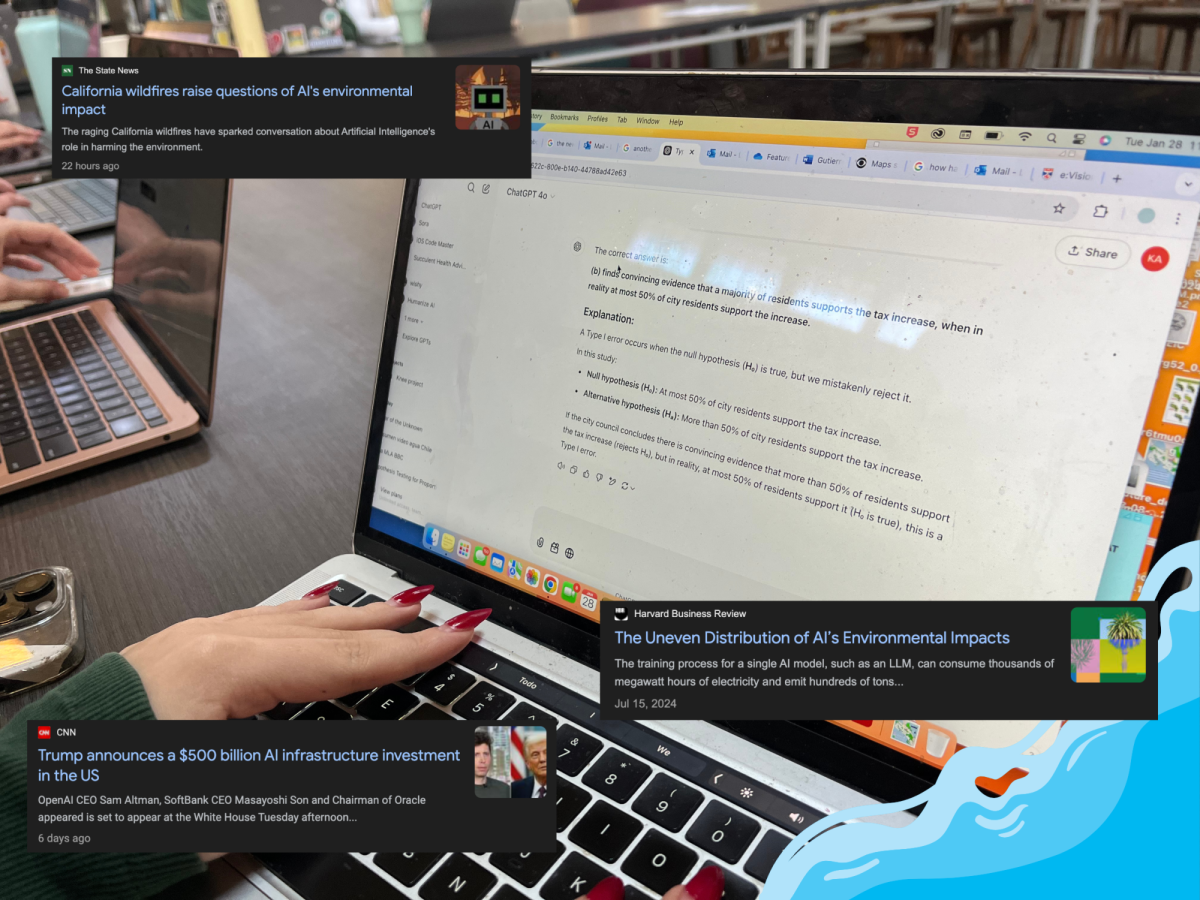With classes shifted via Zoom with a possible return after February break, many students and teachers are doing their best adapting to an online environment. Adjusting to online learning requires many modifications that both students and teachers need to get accustomed to. For instance, students need to find effective ways to get in touch with their teachers, establish a functional working space at home for class, and are ever more reliant on Canvas which now serves as a class library where all course content and educational resources are posted.
Reading and the way you read is an important, but often overlooked, aspect that one must adapt during online learning. At Webb, the library and dorms provide printers where students can easily print out their class material and readings or students can just choose to read straight from their laptop. However, with virtual learning, some students may not have a printer readily accessible and so, reading from a digital device is their only option. Although many students did receive physical copies of class textbooks, books, and readings during the beginning of the school year, there is a divide in the Webb community; many are split on whether reading digitally or reading a physical book works best for them.
“eBooks can increase student accessibility for texts and certainly help students who cannot obtain a physical copy or have the flexibility of being able to take a copy to various places,” said Rae Brookshire, humanities department faculty. “However, I do think that a paper copy of a book is unquestionably better for annotations, and if the world can just exist with paper books, I believe that most humanities teachers can agree that that is the most preferable medium for a book.”
Reading digitally, either from an eBook like an Amazon Kindle, or simply from a PDF download, has many benefits. Portability is a key reason why so many students like to read digitally, since almost all their reading is done on one device which they can carry everywhere.
Furthermore, because all reading is done on a device, whether that is on your laptop, Kindle, or any other technological gadget, digital reading is sustainable and practical. Our environment is already jeopardized, facing a variety of concerns like global warming, pollution, waste disposal, deforestation that affect every human, animal, and nation on this planet. In fact, more than 15 billion trees are cut down each year in the world and much of the paper created from these trees are used to produce books. On average, 626,000 tons of paper are used to produce books in the United States alone, with an estimated 30 million trees cut down last years in book production. Our forests are being destroyed at such an alarming rate, that it is not only concerning, but catastrophic as well.
Other than the fact that mass producing books requires tapping into forests to produce paper, the method of producing books consumes 153 billion gallons of water per year. This alarming amount does not even include the chemicals and inorganic matter released from book production into our environment. Therefore, by reading digitally, you are reducing the number of trees being cut and the amount of water used in production, ultimately helping reduce global warming and sustaining our environment.
Digital reading can also provide a more immersive experience for students, as it is easier to navigate and some eBooks provide a read-aloud feature. When browsing a website, Word or Google document, or even in a PDF, you are able to find words and phrases easily by using the Command-F or Ctrl-F shortcut. This feature is excellent for studying or for skimming through things, as students are able to find the main idea of an academic text in a matter of seconds. Additionally, books that come with audio files can help enhance your reading experience and is preferred by many students, as it prevents them from getting sidetracked.
“eBooks are extremely helpful as you can have multiple books all on one device, which saves so much room and keeps the pages from being ruined or torn in a schoolbag,” Katie Arzate (‘23) said. “e-Books are also good for saving paper as you don’t need to buy a book, and it is easy to highlight and take notes on, as you don’t need to fit your annotations in one-inch margins.”
On the other hand, there are also some drawbacks to reading digitally that may lead students who have accessibility to a printer to use a hard copy. The first thing that comes to mind with regards to challenges of reading digitally is that it causes students to stare at the screen for an even longer period of time. Many Webbies have reported that the amount of time spent on screens is one of the most challenging aspects of switching to virtual learning. Hence, with an already large amount of screen time exhausted each day, many students may just want to opt out of spending even more time staring into a screen and invest in physical books or hard copies.
Digital reading also requires a heavy reliance on access to technology and a strong internet system. Although devices are portable and flexible, with all your books and readings located on one device, if students do not have a reliable device, then this shortage can pose a problem. Additionally, other than just requiring a strong device, batteries and a charger are also of vital importance. Without these essentials, your technological device will not even be able to operate, and therefore reading digitally is impossible. Moreover, though certainly to a much lesser degree than physical books, digital books’ reliance on electricity also ties in with environmental impacts. Our phones, tablets, and computers are predicted to have the biggest carbon footprint in the tech industry by 2040, and while these digital devices do not require a lot of energy to operate, their short shelf life causes an extraordinary amount of waste to our environment.
Finally, another difficulty that comes with reading digitally is that it is hard to annotate and take notes while you read. Unless you are a tech guru, many students find it challenging to take notes digitally, and find that they retain more information when they write it down on paper. Thus, the physical aspect of books may draw students away from reading digitally and lean towards printed material.
“I prefer physical copies because for me it’s a lot easier to focus, whereas I accidentally skip a lot when I read eBooks,” Sofia Centeno (‘22) said. “Also, I find it a lot more rewarding to read physical copies because I can see how much I’ve read and how much I have left. I’m a sucker for pretty covers and I cannot get that from eBooks.”
Overall, during our current era in publishing technology, the idea of digital books has turned from a sparse luxury to personal preference. Many students are split between whether they prefer digital books or physical books, as each has their own benefits and drawbacks. It will be fascinating to see how much of a degree our digitalized technologies will evolve over time, and whether they will take over most of our everyday necessities.





![All members of the Webb Robotics Winter season teams taking a group photo. Of note is Team 359, pictured in the middle row. “It was super exciting to get the win and have the chance to go to regionals [robotics competition]” Max Lan (‘25) said. From left to right: Max Lan (‘25), Jerry Hu (‘26), David Lui (‘25), Jake Hui (’25), Boyang Li (‘25), bottom Jonathan Li (’25), Tyler Liu (‘25)](https://webbcanyonchronicle.com/wp-content/uploads/2025/03/Screenshot-2025-03-10-at-2.41.38 PM.png)



